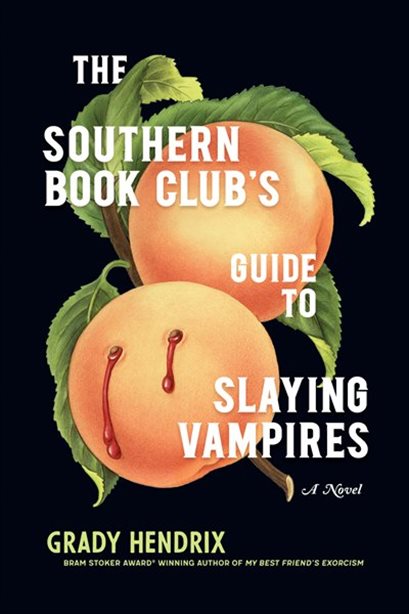While Grady Hendrix weaves his usual world of horror and succeeds in his use of metaphors and displays of female empowerment and social issues, the characters that make the story can often fall flat.
A book is like an entrée. If The Book Club’s Guide is a piece of food, its ingredients are the essence of Buffy the Vampire Slayer, the Southern charm of Steel Magnolias, and (kinda) the women of Desperate Housewives.
In this novel, Hendrix introduces us to the life of Patricia Campbell. Patricia is your everyday housewife in South Carolina in the 80s and 90s. Married to a workaholic husband, she gave up her job to stay home and raise the kids, becoming involved with the community. To others, this life is idyllic; to her, this life is a bore. For her, the only form of excitement is a book club with the other wives of the neighborhood. After her neighbor attacks her, the neighbor’s mysterious yet handsome nephew James Harris makes his way into Patricia’s life. James ignites a new light within Patricia’s world. However, something is off with the man. As James slowly begins to integrate himself into Patricia’s life, a suspicious string of disappearances and gruesome suicides amongst Black children on the other side of town follow, prompting Patricia to figure out what is going on and how to stop it.
I want to start with the characters and the dynamics within the neighborhood. The women of the book club start out as your typical sitcom housewives: the friendliness is there but it often feels more like a ploy to avoid being seen as weak. We see this when Patricia fails to find the time to read a book for the club, yet goes into the meeting not wanting to let the other women see her back down and realize she did not read at all. Furthermore, the women of the novel feel more fleshed out than one would expect; each woman in the book club has a distinct personality yet none of them are your typical archetypes. We also see the dynamics between the women and their husbands (more on that later).
However, I need to acknowledge that sometimes the characters can go towards the extremes of Southern stereotypes. For example, one of the housewives, Kitty, is racist without any sugar coating, while one of the kids is WWII obsessed (yes, like the guy you knew in school) except he is hyper fixated on Nazi Germany. This sometimes clashes with the tone as while the novel can feel campy, it has too many serious undertones that it just feels out of place and makes it harder to swallow the harsher moments
Another strength of the novel is how social issues are prioritized. As mentioned earlier the dynamics between the women and their husbands is prominent. This opens up a discussion of ‘what is expected of the perfect housewife,’ and while the novel isn’t in the 1950s, it would be wrong to say that there was not some sort of misogyny typical in a Southern neighborhood in the 80s and 90s (Note: vampirism is a good analogy for sexism and the patriarchy). We also see themes of systemic racism through the suicides and disappearances of Black children being brushed aside by the women and the police until it affects them, an issue
Overall, I would recommend this to anyone who loves crime and the paranormal that can also stomach the racism and gore. And when I say gore, I’m not talking just blood. I’m talking mutilation and full-on dismemberments. This novel is truly a page-turner and had me wishing I did not have to put it down when I had to. But, the novel features instances of racism, SA, child and animal death, and dismemberment (as mentioned earlier), so if that alarms or sickens you, please stay clear of this tale of Dracula in South Carolina.
Rating: 3.5 of 5 Stars

